This post may contain affiliate links. Please read our disclosure for more info.
Do your arms feel like jelly in plank pose or do they start to shake when attempting an arm balance? Tired arms during your yoga practice is very common, and it is totally normal for yoga to make your arms feel tired. You might feel that you don’t have enough arm strength to hold yourself up during certain poses, but know that with time and practice, you will feel stronger in no time.
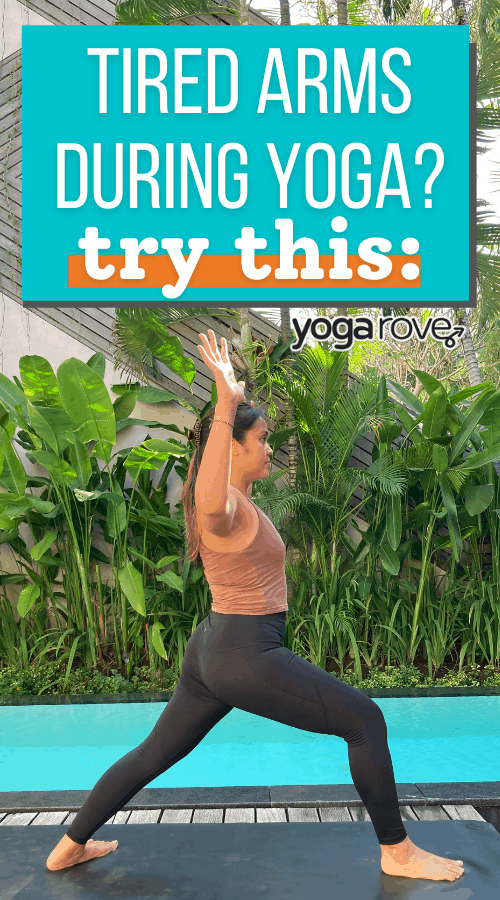
So what should you do if yoga makes your arms tired? The best thing to do is to strengthen your arms and your upper body muscles. Whether it’s through your yoga practice, or by doing separate strengthening and stability exercises, building up the strength in your upper body will help to fire up those muscles so that they will no longer feel weak or tired during your yoga practice.
In addition to building strength in your upper body, make sure that you are also using your lower body muscles correctly so that your upper body isn’t compensating and using more strength than it should be. It’s important to practice yoga with the correct alignment and muscular effort so that you are able to find a sense of stability and balance in all the poses that you practice.
Why Do My Arms Get Tired When Holding Them Up?
In everyday life, it’s not common to keep your arms up for an extended period of time. Unless you are a professional dancer or gymnast or have a job where you have to use your upper body daily, you just won’t be using your arms and upper body enough to be building a lot of strength in your day-to-day life.
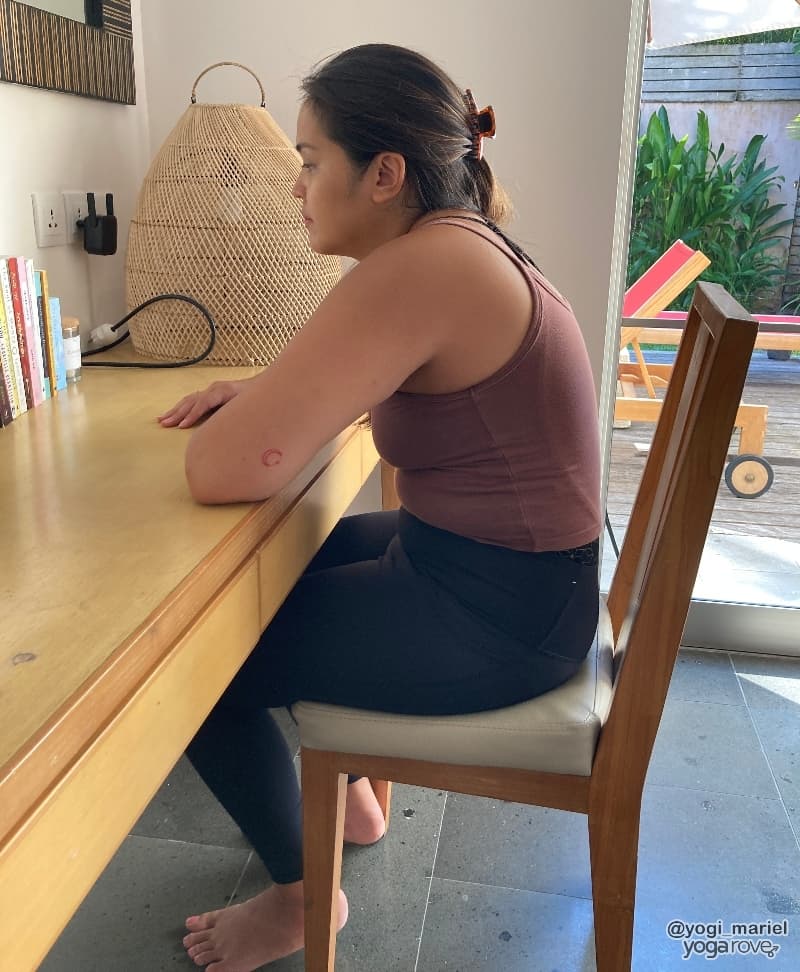
When practicing yoga, you use your arms and upper body muscles in different ways, and it can take some time to build up your strength. Common reasons for tiredness in your arms include:
- Poor posture or upper body strength: If you have poor posture or lack upper body strength, certain muscles may not be turning on as they should. Yoga wakes those muscles up and until your strength is built, you may feel weak and tired in certain parts of your body.
- Sedentary lifestyle: Sitting at a desk all day? Movement lubricates your joints and helps you to build strength, stability, and flexibility. If you are sitting for most of the day, it is completely normal to have tired muscles when you are first starting your yoga practice.
- Imbalances or injuries in your body: Muscle tightness, past injuries, and imbalances are very common in every person’s body. Sometimes we can overcompensate for different parts of our bodies, causing muscle weakness or imbalance. Start to get curious about your body and where you may feel you need strengthening and stabilizing.
Alignment Issues
Every single body has its instabilities and misalignments. Yoga helps to realign the body, strengthen your muscles, and find balance internally and externally. When you practice yoga, it becomes easier to identify where you may feel weak or unsteady and you can work towards finding more alignment and strength where you need it. A few things to keep in mind when building your arm strength:
- Don’t forget about the rest of your body: When building up your arm and upper body strength during your yoga practice, it is super important to keep the rest of your body in mind. Use your core and lower body to support your upper body, and check that you are practicing proper alignment as you strengthen your muscles.
- Be aware of past or present injuries: Injuries or overuse of certain muscles can cause misalignment in your body. As you practice, be aware of overcompensating with different muscles or overworking one side. Try to practice in a balanced way with awareness of your entire body.
- Find a teacher: A certified yoga instructor is the best way to make sure that you are practicing proper alignment, especially in challenging poses like Chaturanga. Find a teacher that you resonate with and let them know of any alignment issues that you may have. They will be able to look out for you and help you to practice with the proper alignment during class.
How to Build Up Arm Strength
Upper body strength is not built with just planks and Chatarungas. Your practice should be well-rounded and should address mobility and stability in your entire body. A strong foundation can help to build strength in the entire body, so make sure that you are engaging your core and your entire body when practicing poses to build your upper body strength.
Plank
This pose not only builds your upper body strength, but it also builds your core and lower body. This is a great posture to build the strong foundation that you will need in your yoga practice. Make sure to keep proper alignment and modify the pose if you need.
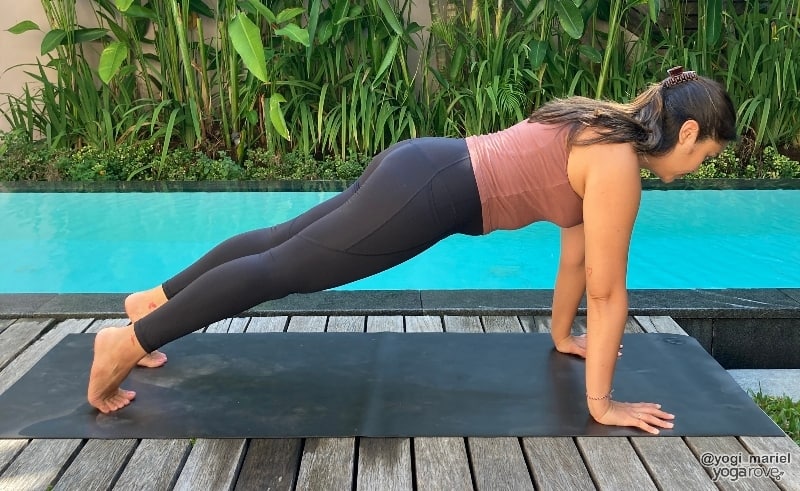
To practice Plank Pose:
- Start on your hands and your knees.
- Check that your hands are under your shoulders and spread your fingers wide, creating a strong foundation with your upper body.
- Step your right foot and then your left foot back until you are in a plank position with your body straight, legs long and engaged, and heels up.
- Check your alignment. Make sure that your shoulders are over your wrists, hips square and not lifted, legs strong, and core engaged.
- Feel your shoulder blades squeeze slightly down your back, and push the mat away from you.
- Stay for 5 deep breaths. If you need to modify, place your knees down on the mat.
Modified Chaturanga/ Knees-Chest-Chin
Chaturanga is an advanced posture that can take time to build up to. While it can be frustrating to feel yourself plop down every time you attempt it, it is extremely important to build up the muscles you need for the pose and to keep your shoulders and your entire body in their proper alignment. Modifying Chaturanga is the perfect way to build strength and stability in your upper body so that eventually you can seamlessly make your way into Chaturanga.
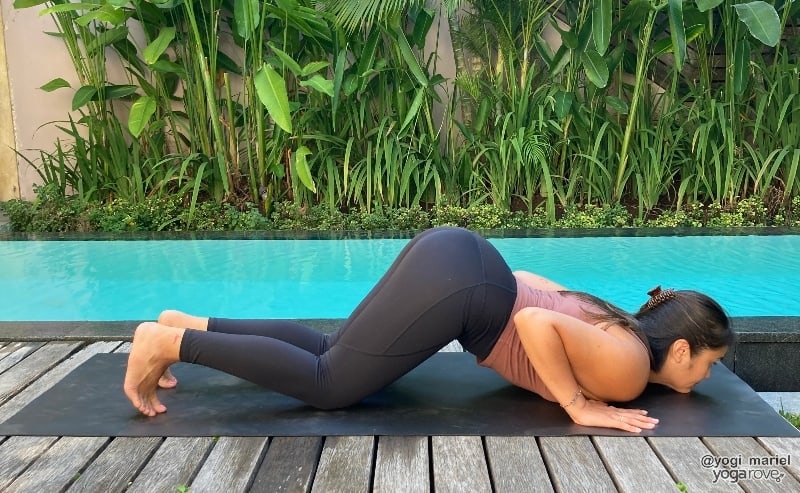
To practice Modified Chaturanga:
- From your plank pose, lower your knees down onto the mat.
- Keep your toes curled under and your upper body in the plank alignment.
- Engage your core and draw your belly button in toward your spine to avoid arching your back.
- Shift your weight slightly forward and ower your chest and chin down onto the mat.
As you do this, hug your elbows in close to the sides of your body, keeping your elbows pointing straight up toward the sky. - Practice this a few times, working on lowering your knees, chest, and then chin slowly onto the mat, while keeping your core engaged and elbows hugging in close to your body.
Warrior 2
While this may seem like a pose that focuses mainly on the lower body, Warrior 2 is a great one for building strength and stability in your upper body, as well. If your arms get tired during standing poses, this is a great one for you. Focus on keeping your chest lifted and open, your shoulders relaxed, and your arms strong.
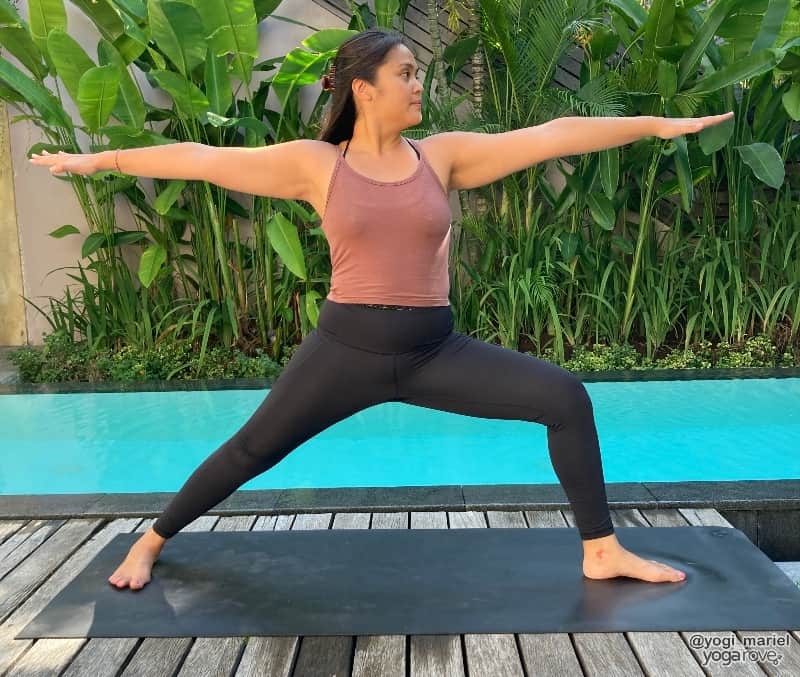
To practice Warrior II:
- Start at the top of your mat and turn to your right.
- Step your right foot out to your right and take a wide step.
- Take your arms out parallel to the floor and check that your ankles are directly below your wrists.
- Turn your right foot out to the right with your toes pointing to the back of your mat. Your right heel should be in line with your left inner arch.
- Bend your right knee so that your thigh is parallel to the floor (or as parallel as you can go for today).
- Keep your left leg strong and ground your heel down to the mat.
- Keep your arms strong and your upper body right in the center.
- Turn your head to the back of the mat and look over your right fingertips.
Focus on keeping your shoulders down, your arms engaged, and your core strong.
What To Do If Your Arms Get Tired Holding Them Up
If something feels super uncomfortable during your practice, there is absolutely no need for you to keep doing it. It’s important to notice and become aware of your body and its needs while you practice, and if your arms are screaming at you – listen!
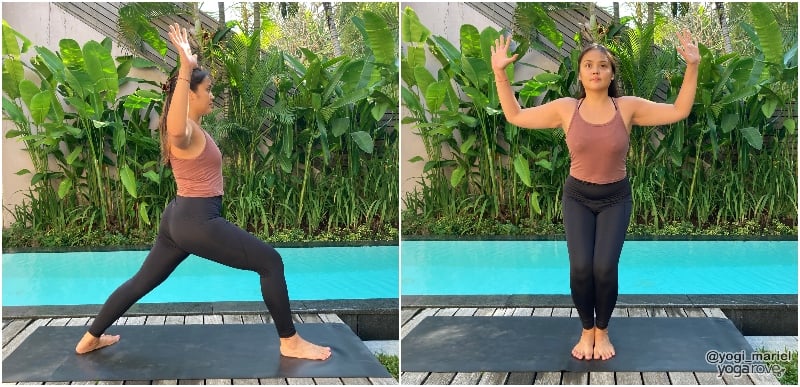
Here are the best things to do if your arms get tired during yoga:
- Modify: Almost every single yoga posture has a modified version, and if it feels better to modify – do so! Skip Chaturanga and modify with the ‘knees, chest, chin’ variation. Lower your knees down in plank, or bend your elbows instead of straightening them in your Chair pose or Warrior 1. As you begin to build strength, you can start to play around with moving into the full expression of the pose.
- Listen to your body: If your body is telling you something – listen. If your arms are getting too tired during your practice, it may be a good idea to modify the pose, or even take a breather in Child’s Pose. It’s not the best idea to force your body into a position, so check in with your breath and how the pose feels in your body regularly.
- Keep practicing: The way to build up your strength in poses where your arms feel tired is to keep practicing them. But again, do so mindfully and with modifications, if necessary. The more you work the muscles you need in each pose, the stronger you will become.
Remember, tired arms during your yoga practice are totally normal! Whether it’s holding your arms up in Warrior 1, or learning how to balance on your hands – there will always be those moments during practice where you can feel new muscles being activated and strengthened. With regular and consistent practice, you can build up your arm and upper body muscles, and find strength, stability, and ease as you flow through your poses.


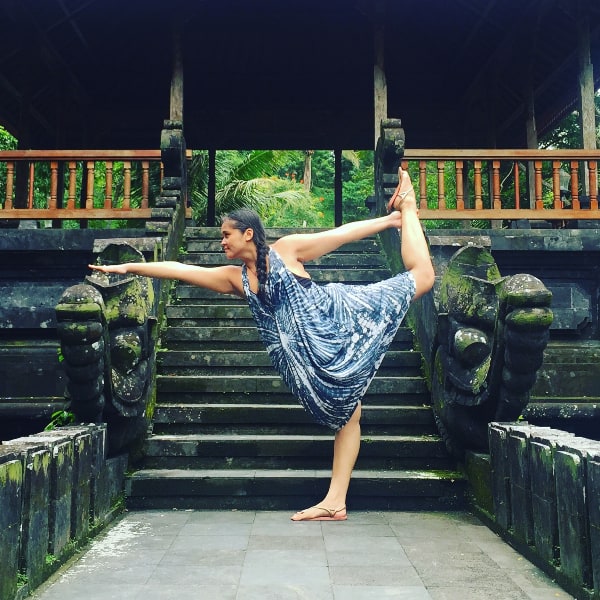
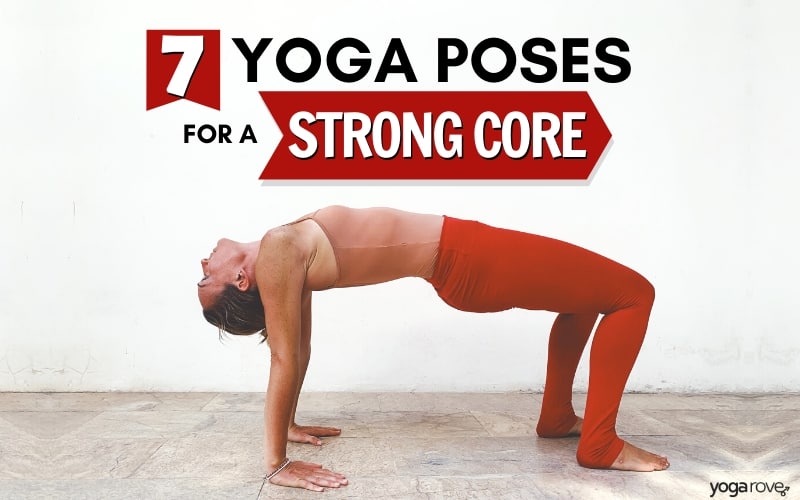
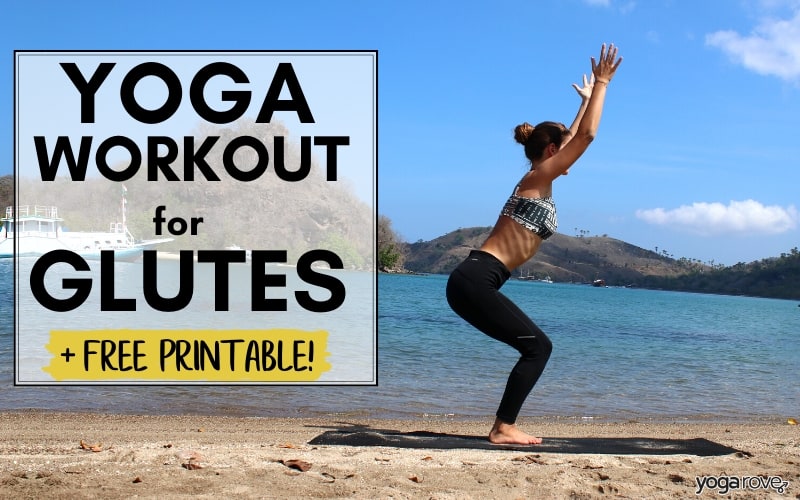
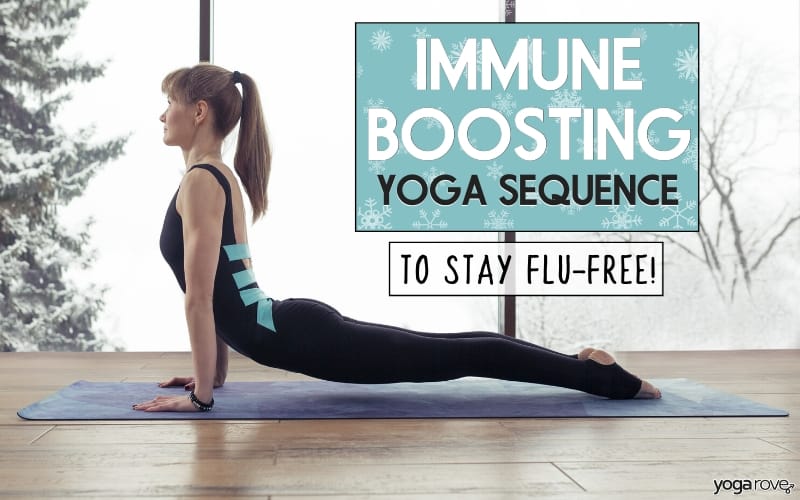

Thank you Ally for sharing. Your tips keep me from giving up.
so happy to hear that Lynda!! 🙂
hi. this article is so spot on for me! my arms get super tired in warrior poses, and in any pose where i have to lift and hold up my arms…..my arms don’t even go all the way up in some poses….it could be a sedentary lifestyle issue, age factor and also internal weakness….the author could have taken all these into account….i’m 46 and started to seriously practice yoga 2 yrs ago. have been doing it on and off for years but not very consistently…. i’ve started to take supplements like adaptogens etc to increase energy and reduce stress, i’m hoping these supplements will help.
Glad you enjoyed it Fatma! Can totally relate- my arms used to get sooo tired ini Warrior 2. As I practiced more and more though, my strength increased and it became less and less challenging 🙂